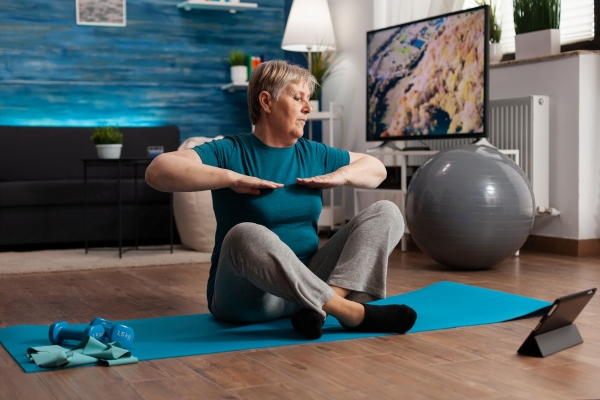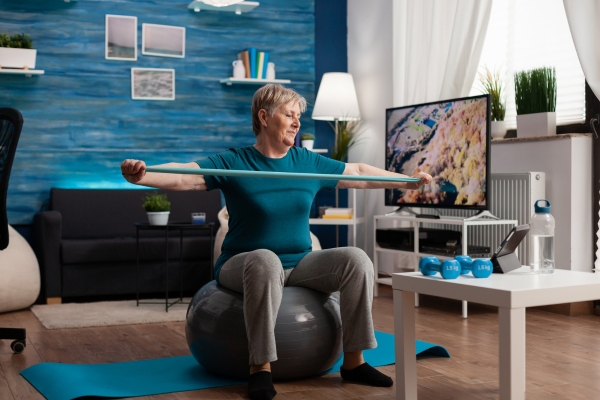Table of Content
- Understanding Telehealth in Physiotherapy
- How Remote Physio Sessions Are Delivered
- Who Is a Good Candidate for Telehealth Physiotherapy
- Conditions Commonly Treated via Virtual Physio
- Benefits of Telehealth Physiotherapy
- Comparing Physiotherapy Home Service and Virtual Care
- Role of a Telehealth Physiotherapist
- Preparing for a Virtual Physio Appointment
- Evaluating the Effectiveness of Telehealth Sessions
- Privacy and Confidentiality in Remote Care
- When In-Clinic Appointments May Still Be Needed
- How Go Run Go Physio Delivers Telehealth Services
- Frequently Asked Questions
- Conclusion
Understanding Telehealth in Physiotherapy
Telehealth physiotherapy is a modern solution that enables people to access expert care from the comfort of their homes. Without needing to visit a clinic, patients can connect with a qualified physiotherapist using video consultations to receive assessments, movement guidance, rehabilitation support, and personalised care plans.
This approach is particularly helpful when mobility is limited, travel is inconvenient, or consistency in appointments is essential. With telehealth, there’s an opportunity to maintain recovery progress and expert support, no matter your location.
How Remote Physio Sessions Are Delivered
Telehealth appointments are structured to closely reflect in-person consultations:
- You book a session through a secure online platform
- The physiotherapist reviews your medical history and current symptoms
- Movement patterns, posture, and strength are assessed through guided observation
- Treatment plans may include self-mobilisation techniques, education, and exercise programs
- Follow-up appointments are scheduled to monitor and adjust progress
Clinics like Go Run Go Physio use encrypted platforms to protect patient confidentiality while delivering real-time care.
Who Is a Good Candidate for Telehealth Physiotherapy
Remote physiotherapy suits a wide range of people who:
- Experience back, neck, or joint discomfort
- Are recovering from surgery and need gradual, guided rehab
- Live with chronic pain or stiffness
- Need support with workplace ergonomics
- Prefer flexible care that fits around their lifestyle
It’s also suitable for those managing long-term conditions or who find it difficult to attend clinics due to scheduling or transport barriers.
Conditions Commonly Treated via Virtual Physio
A number of musculoskeletal and neurological conditions can be effectively supported with telehealth methods. These include:
| Condition | Example of Support Provided |
| Back or neck pain | Postural advice, guided mobility routines |
| Joint stiffness or sprains | Targeted strengthening and flexibility work |
| Tendon issues | Load management and recovery techniques |
| Post-surgical rehabilitation | Supervised progress with home-based plans |
| Arthritis and joint concerns | Self-management strategies and exercise |
| Sports injury maintenance | Technique modification, pain education |
Benefits of Telehealth Physiotherapy

There are clear advantages to receiving physiotherapy remotely:
- No travel needed, saving time and reducing fatigue
- Access from remote or regional locations
- Flexible scheduling with fewer disruptions to daily routines
- Greater independence by learning how to manage your body confidently
- Safe continuity of care in situations that limit clinic visits
- Cost savings with reduced travel or time off work
Many patients report feeling more empowered and consistent with home-based rehabilitation when guided properly.
Comparing Physiotherapy Home Service and Virtual Care
| Feature | Physiotherapy Home Service | Telehealth Physiotherapy |
| Therapist visits in person | Yes | No |
| Requires travel | Therapist travels to you | Conducted entirely online |
| Hands-on treatment | Available | Not available |
| Exercise guidance | Yes | Yes |
| Cost | Higher (travel included) | Often more affordable |
Virtual care is a practical alternative when hands-on treatment isn’t essential or when face-to-face visits aren’t feasible.
Role of a Telehealth Physiotherapist
The physiotherapist plays an active part in helping you:
- Understand what’s contributing to your discomfort
- Set clear goals and timelines for recovery
- Perform exercises with correct technique
- Stay accountable and consistent with routines
- Adjust plans as needed based on your progress
Clinics such as Go Run Go Physio have specialists trained in delivering remote physiotherapy safely and effectively, using observation and clinical reasoning.
Preparing for a Virtual Physio Appointment
A few steps will help your session run smoothly:
- Choose a space with enough room to move freely
- Wear clothes that allow your physiotherapist to observe movement
- Use a stable device (laptop, phone, or tablet) with a working camera
- Ensure good lighting and a quiet environment
- Have previous reports, scans, or referrals available if needed
Being prepared allows for a more accurate assessment and better overall experience.
Evaluating the Effectiveness of Telehealth Sessions
Research and real-world results show that virtual physiotherapy can deliver comparable results to clinic-based sessions for many issues.
The effectiveness of care relies on:
- Clear communication between therapist and patient
- Willingness to stay engaged with rehab exercises
- Using feedback to refine techniques and adjust the plan
Patients who actively follow advice and commit to the process often see results that are similar to those attending in person.
Privacy and Confidentiality in Remote Care
Quality physiotherapy providers follow national health privacy laws when delivering remote care. This includes:
- Use of secure, encrypted video platforms
- Consent-based care agreements
- Private record-keeping and data management
- No recordings without patient approval
Go Run Go Physio uses trusted systems to deliver confidential and safe physiotherapy services.
When In-Clinic Appointments May Still Be Needed
While telehealth can handle a large range of conditions, some situations require in-person support:
- When manual therapy is needed to treat specific joints or muscles
- For detailed physical tests that need touch-based assessments
- If exercise equipment only available in clinic is required
- For complex or urgent neurological or post-trauma presentations
Often, clinics use a flexible approach starting remotely and shifting to in-clinic when necessary.
How Go Run Go Physio Delivers Telehealth Services
Go Run Go Physio has built its telehealth service to offer the same level of professional care as in-person appointments, with:
- Easy-to-use, secure booking and video platforms
- Australian-qualified physiotherapists with experience in virtual care
- Personalised rehabilitation plans adapted for your environment
- Progress tracking and ongoing check-ins
- Support if transitioning between remote and in-clinic sessions
Their approach prioritises simplicity, clarity, and effective care no matter where you’re connecting from.
Frequently Asked Questions
Q1. Can I claim telehealth physiotherapy through private health funds?
Answer: Yes, many private health insurers provide rebates for telehealth consultations. Always check with your provider.
Q2. What if I don’t have gym equipment at home?
Answer: Your physiotherapist will recommend exercises using body weight or common household items.
Q3. Can remote physio help with recurring sports injuries?
Answer: Yes. Corrective guidance, training advice, and monitoring can prevent flare-ups and assist in long-term recovery.
Q4. How do I know if I’m doing the exercises correctly?
Answer: You’ll receive visual demonstrations and your physiotherapist can watch and correct your form via video.
Q5. Is my personal information safe during a telehealth session?
Answer: Yes. Clinics like Go Run Go Physio use secure, encrypted software that meets healthcare privacy standards.
Q6. What should I do if I feel worse after a virtual session?
Answer: Contact your physiotherapist immediately. They can adjust your plan or advise on whether a face-to-face visit is needed.
Q7. Can I combine online and in-person appointments?
Answer: Absolutely. Many clinics support hybrid models to suit patient needs and recovery stages.
Conclusion
Telehealth physiotherapy has become a practical and effective way to access professional support without stepping into a clinic. For people managing mobility issues, recovering from injury, or simply seeking a flexible solution that fits their schedule, virtual appointments offer genuine value.
With structured guidance, clear communication, and the support of experienced professionals, it’s possible to achieve real progress in comfort and confidence. Go Run Go Physio is helping lead this shift making expert physiotherapy more accessible than ever.

